This is the blog of Mark Wordsworm, the travelling worm. I’m a 40-year-old bookmark (give or take a few years) and I proudly boast my own Hallmark serial number, 95 HBM 80-1. You’ll probably want to read all about me and my Travelling Companion (the TC).
Today’s travel notes
Me and the TC reached Lake Mungo, deep in the Australian Outback. This post is about Mungo National Park and the dry lake that forms its centre. I’ll write a separate post about the Walls of China, an unusual sand formation in the middle of the park.
The book I’m in
Bitter Sun, by Beth Lewis. I’m tucked in near the beginning of this book. The story is unfolding, and I’m intrigued by the characters and the setting.
Travel tips
Take spare supplies with you: lights, water, food, warm clothing, and extra fuel for your vehicle. Mungo National Park is remote. The closest fuel is about 110 km away. It’s a good idea to be self sufficient in case of emergency.
Recommended accommodation
Mungo Lodge offers camping and cabins. The TC opted for a cabin, which was very comfortable. The welcome is warm and the restaurant food is good.
The photos
Me at the Red Top lookout in Mungo National Park:
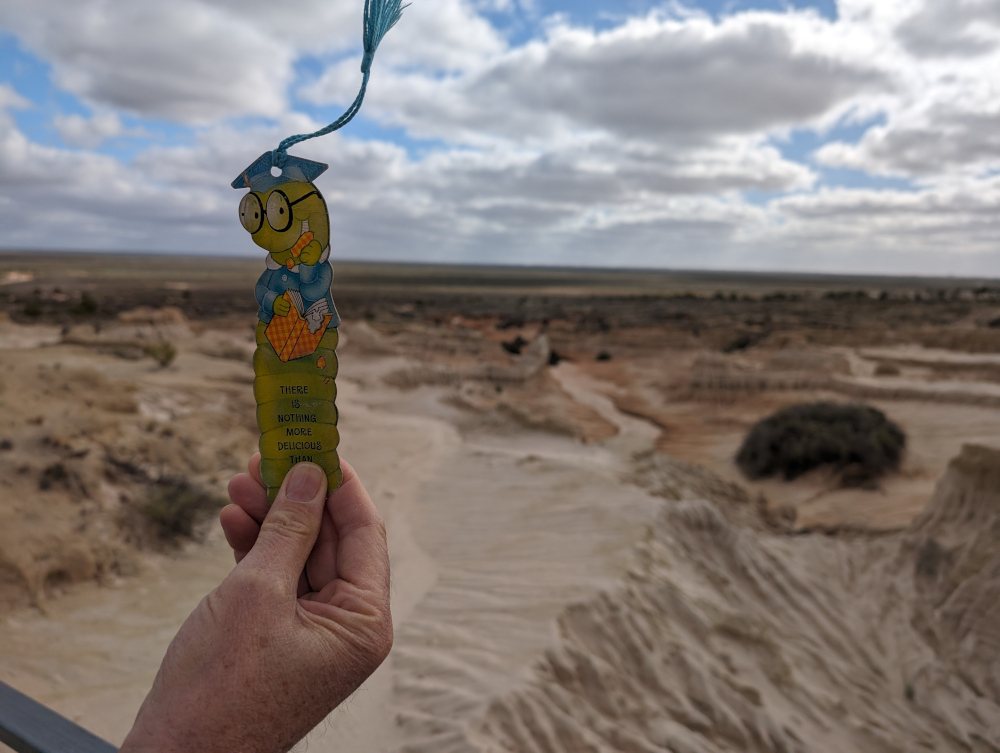
From the direction of Ivanhoe and Clare, Garnpang Road provides entry to Mungo National Park:
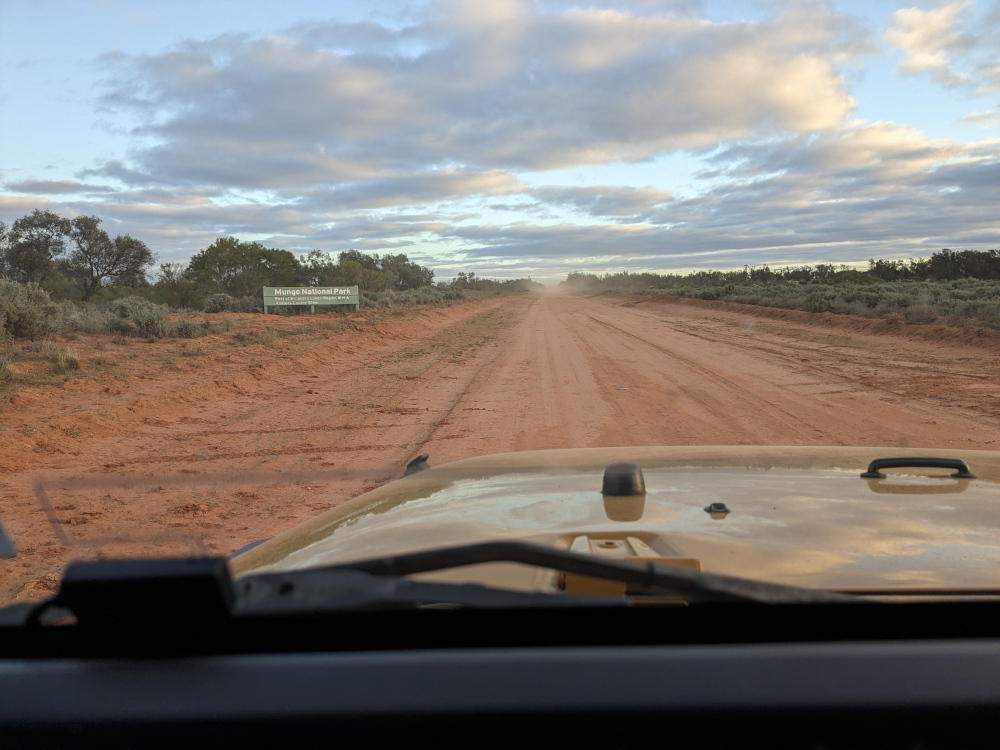
We were somewhat later than planned. The sunset over Garnpung Lake, though pretty, was a trifle scary — it meant we’d be driving in the dark. Janet the Jeep, along with others of our party, couldn’t resist the photo opportunity:

After a nail-biting drive, ably handled by the TC and Janet, we arrived safely at Mungo Lodge. Janet sashayed merrily across the corrugations, dodging kangaroos that bopped out of the bush at random. By the time we arrived at the lodge, it was full dark. The photos are from the following day.
The reception at Mungo Lodge is friendly and welcoming:
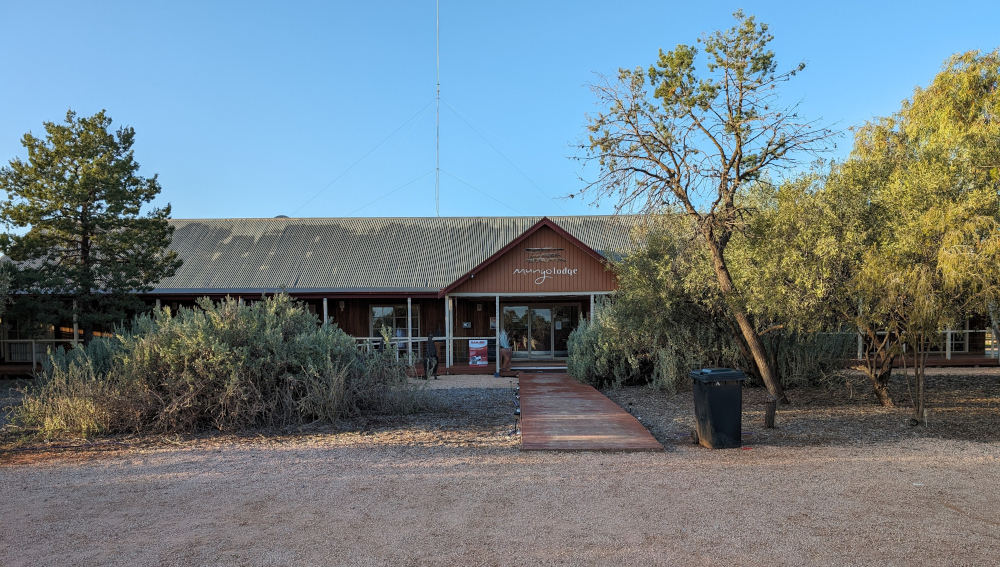
The dining area is spacious and warm:
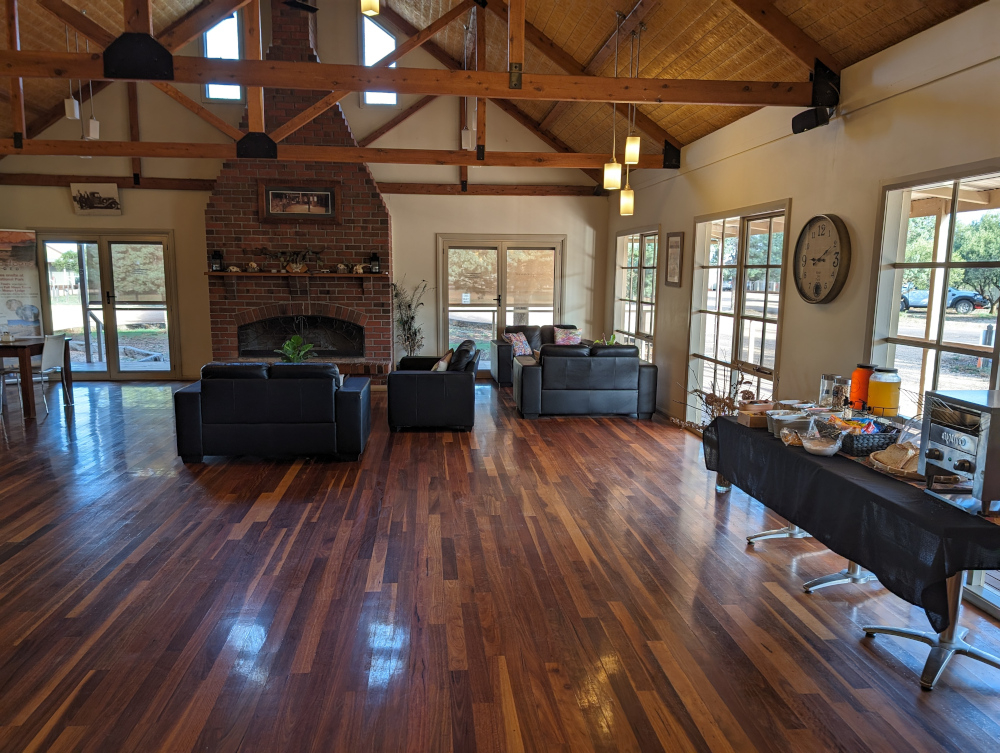
Our cabin looked out over a grassy area, where kangaroos and birds frolicked in the early morning. (If you want to see the birds, take a look at the TC’s bird blog, Sydney Birder. She’s posting the birds from our Outback trip. The Mungo shots will be there shortly.) Here’s our cabin at Mungo Lodge:

This worm was delighted to find evidence of my cousins, the Witchetty grubs. They’re imposing larvae that transform into Ghost Moths. A shed Witchetty grub skin lay on the ground outside our cabin, about as long as the TC’s longest finger:

Next morning, we headed out on the self-guided driving tour through the park:

One of the stops was at the Red Top lookout:
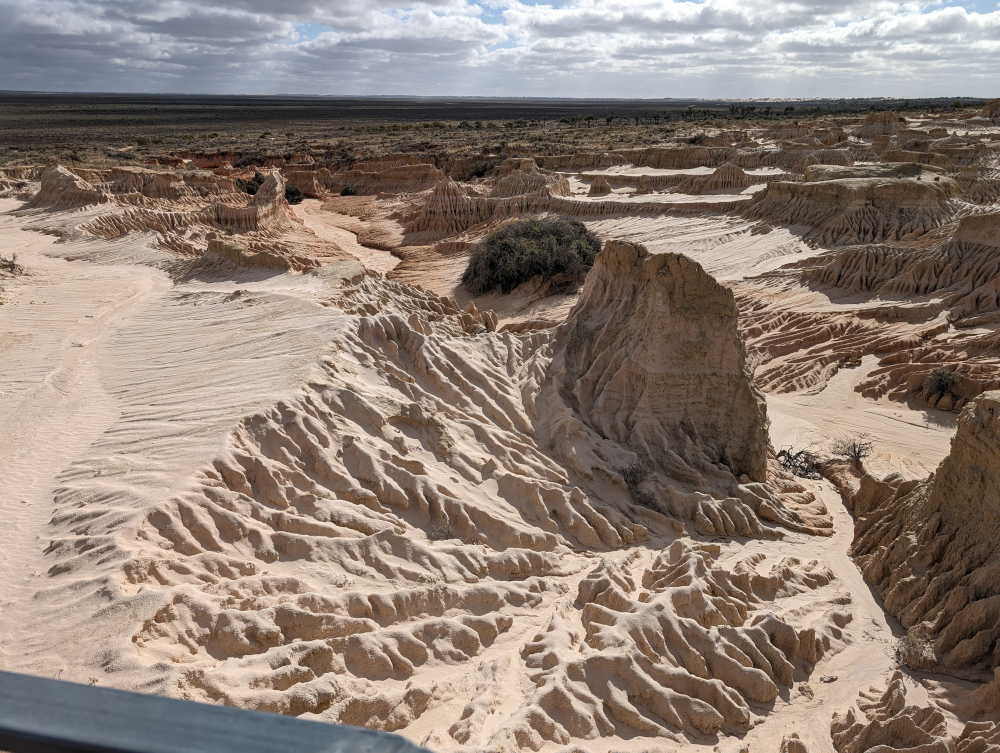
The sand formations are the result of wind erosion:

A sign welcomes you to Lake Mungo:
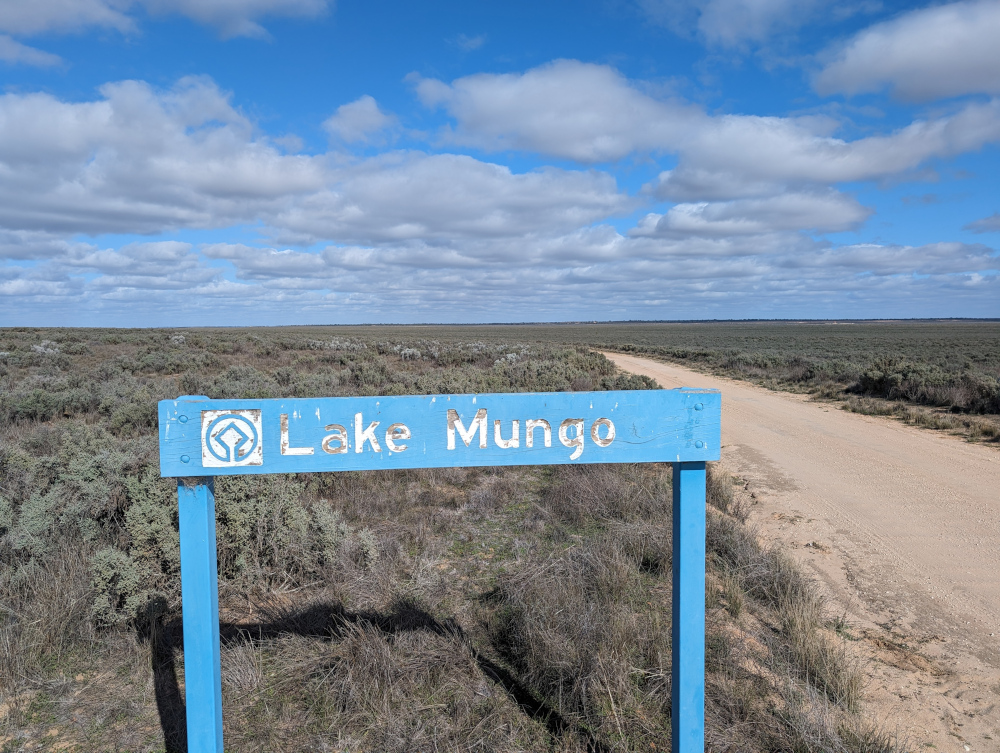
Despite the name, there’s no water. The lake has been dry for more than 10,000 years. The next shot was taken from the Walls of China viewing area (which will be the topic of my next post). Behind the bench, the dry expanse of Lake Mungo stretches out:
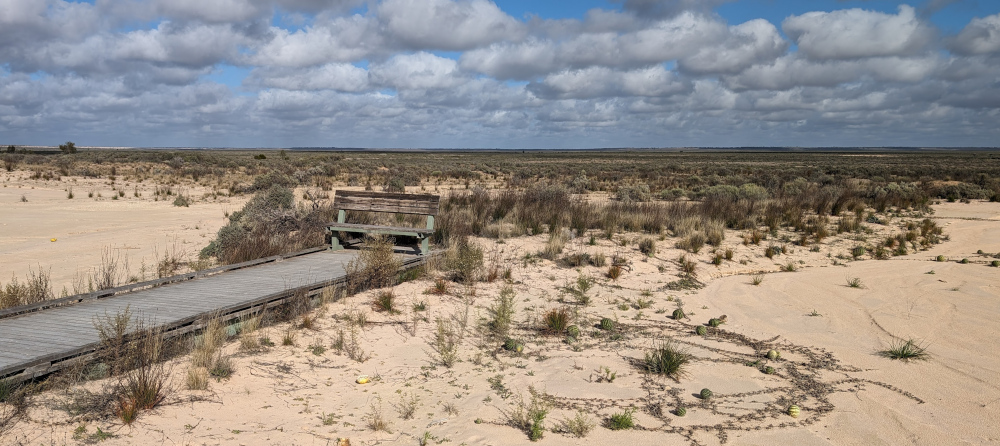
The round balls in the foreground are Paddy Melons, an invasive fruit that occurs in much of the Outback.
Every now and then, a flower softens the harsh beauty of the landscape:
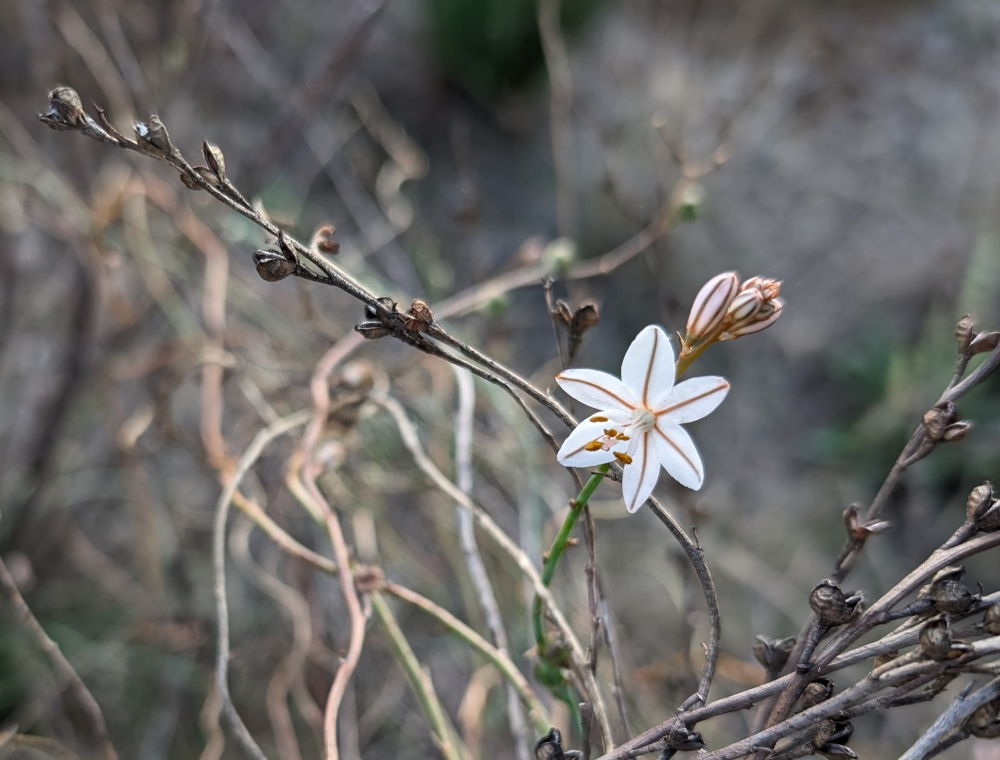
Next up are the Walls of China. Until then…
That’s all for today, folks.

Talk to the Travelling Worm!